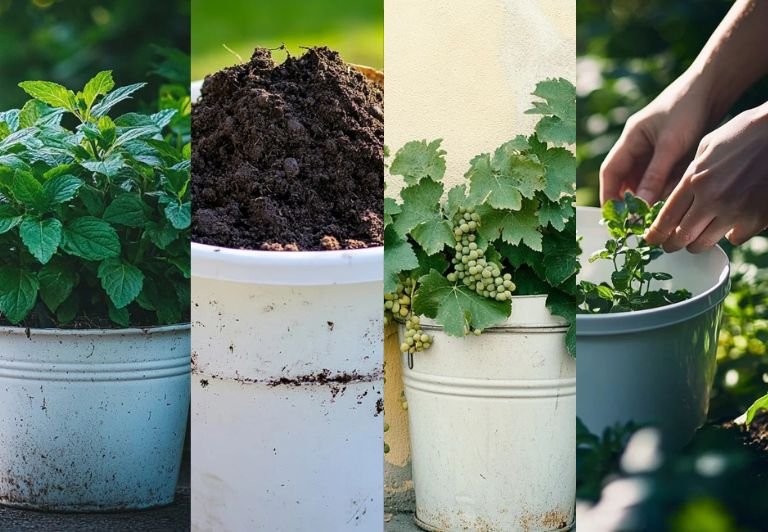9+ Expert Tips for Bucket Gardening 2025!
Bucket gardening offers a practical and space-saving way to grow fresh vegetables and herbs, even in small areas.
Have you ever wondered how to maximize your harvest using simple containers and smart gardening techniques?
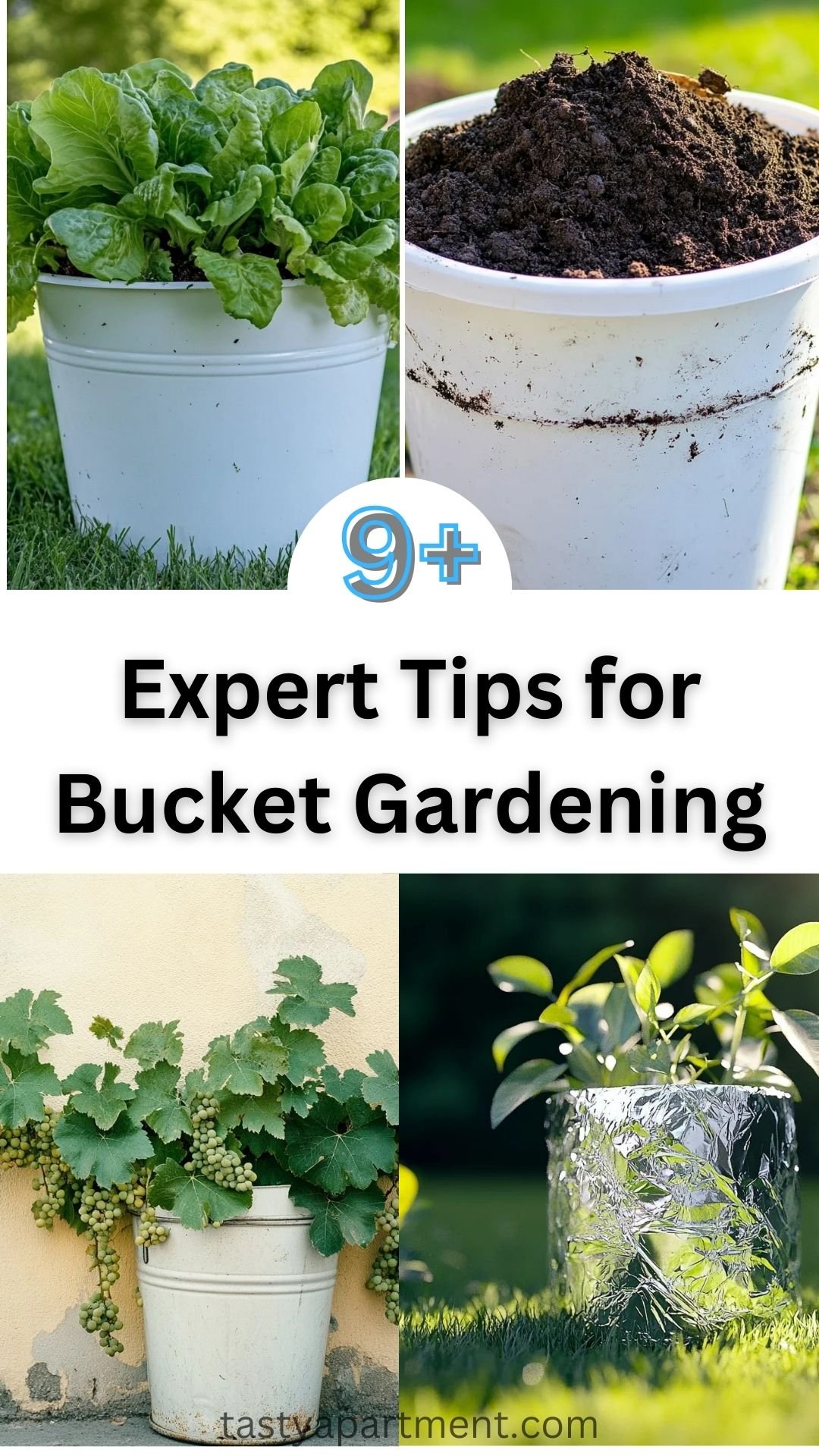
In this article, we’ve compiled 15+ expert tips for bucket gardening to help you cultivate a thriving garden with ease.
9+Expert Tips for Bucket Gardening!
1. Choose the Right Bucket
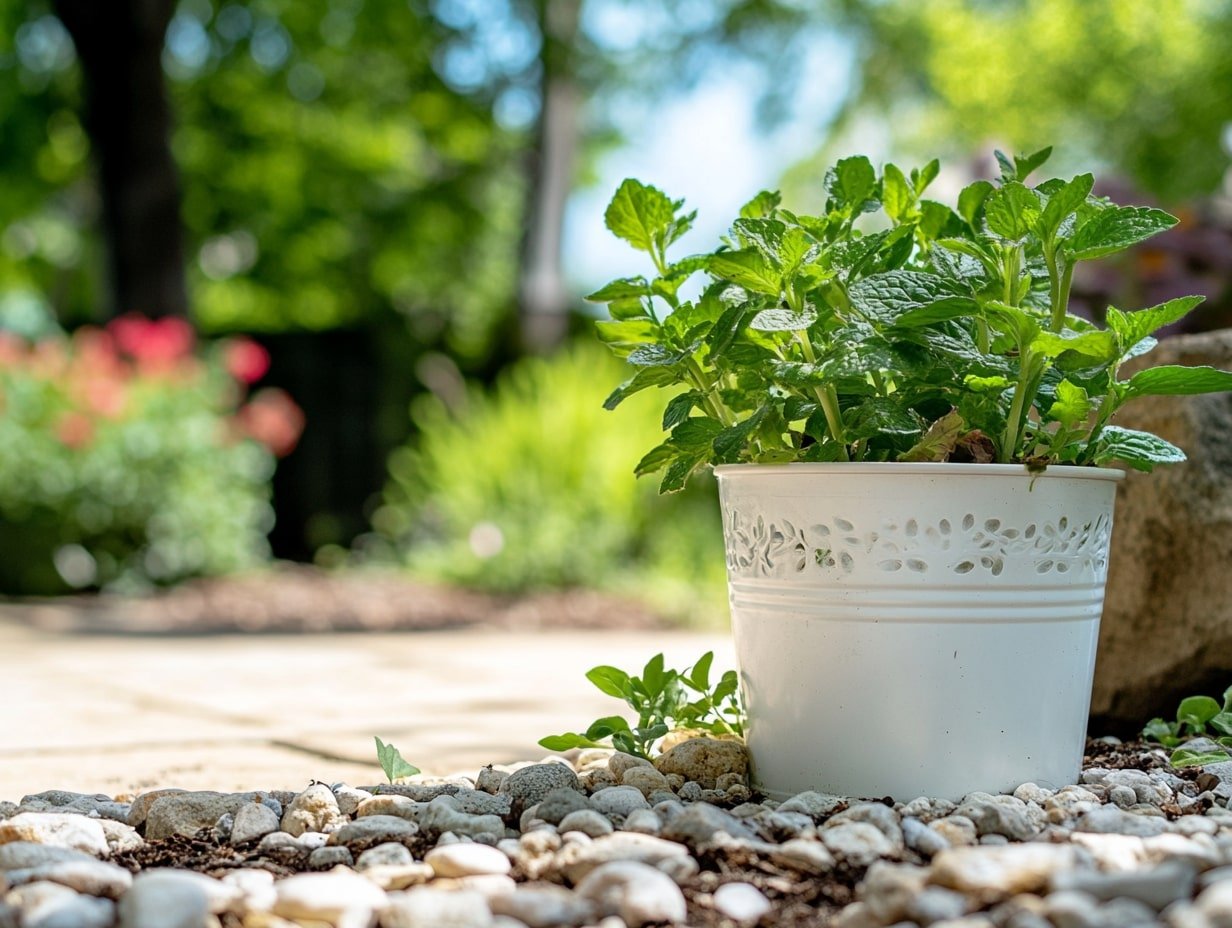
- Size Matters: Opt for a bucket that’s at least 5 gallons for most vegetables smaller sizes can restrict root growth.
- Material Options: Food-grade plastic, galvanized metal, or recycled containers all work well; just ensure they’re non-toxic and weather-resistant.
- Aesthetic Appeal: Decorative buckets like the one shown elevate your garden’s look while still being fully functional.
- Mobility Consideration: Lightweight buckets are easier to move around for sun exposure or protection during storms.
- Pro Tip: Avoid dark-colored buckets in hot climates they retain heat and may overheat plant roots.
2. Ensure Proper Drainage
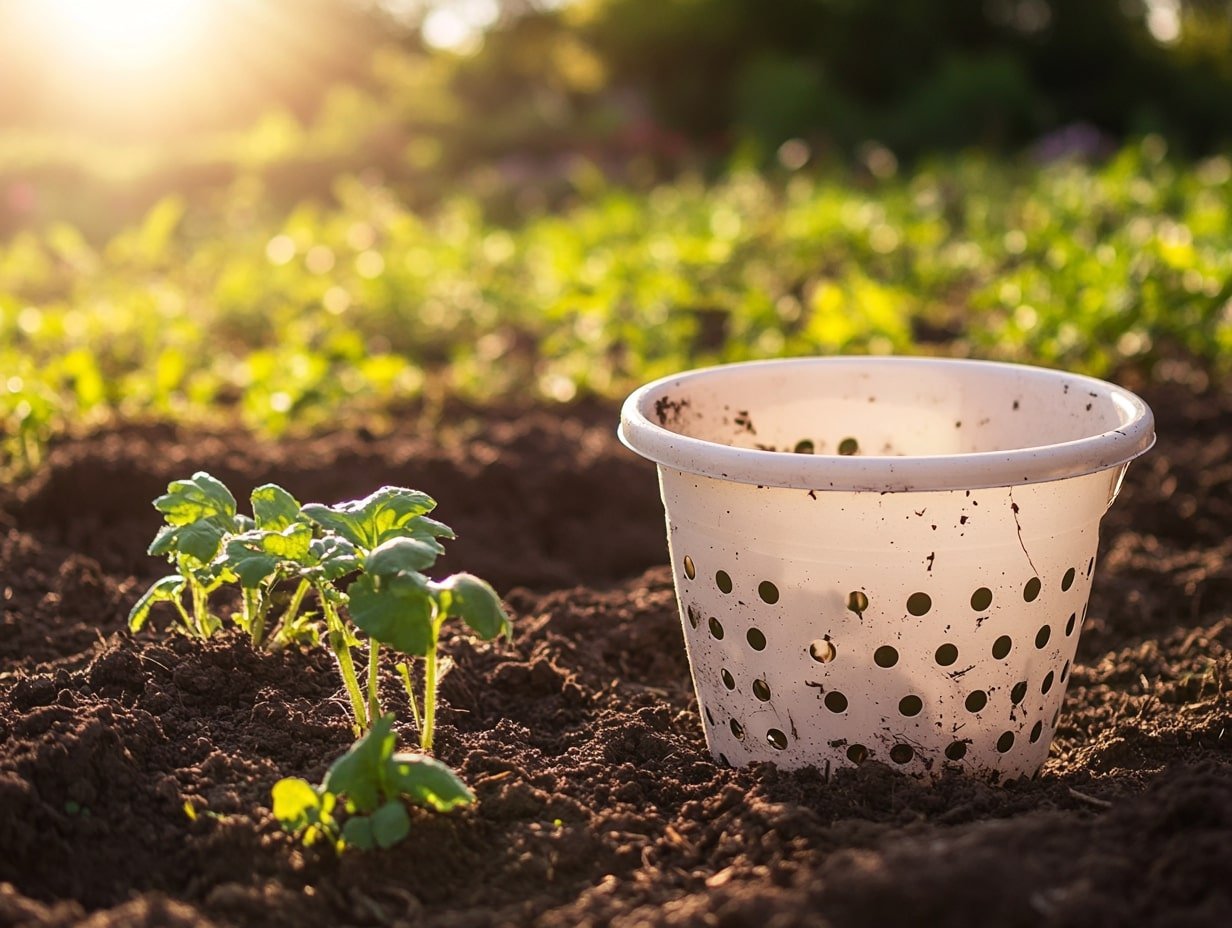
- Perforated Design: Buckets with pre-drilled holes like this one are ideal for promoting proper water drainage and preventing root rot.
- Healthy Roots: Good drainage ensures oxygen reaches plant roots, reducing the risk of fungal disease and encouraging strong growth.
- DIY Option: If your bucket doesn’t come with holes, use a drill to create several at the bottom and slightly up the sides for overflow protection.
- Sustainable Practice: Reuse old colanders or perforated containers to upcycle kitchen items into eco-friendly garden buckets.
- Pro Tip: Add a layer of pebbles or coarse gravel at the bottom of your bucket to improve water flow and stop soil from escaping through the holes.
3. Use Quality Soil Mix
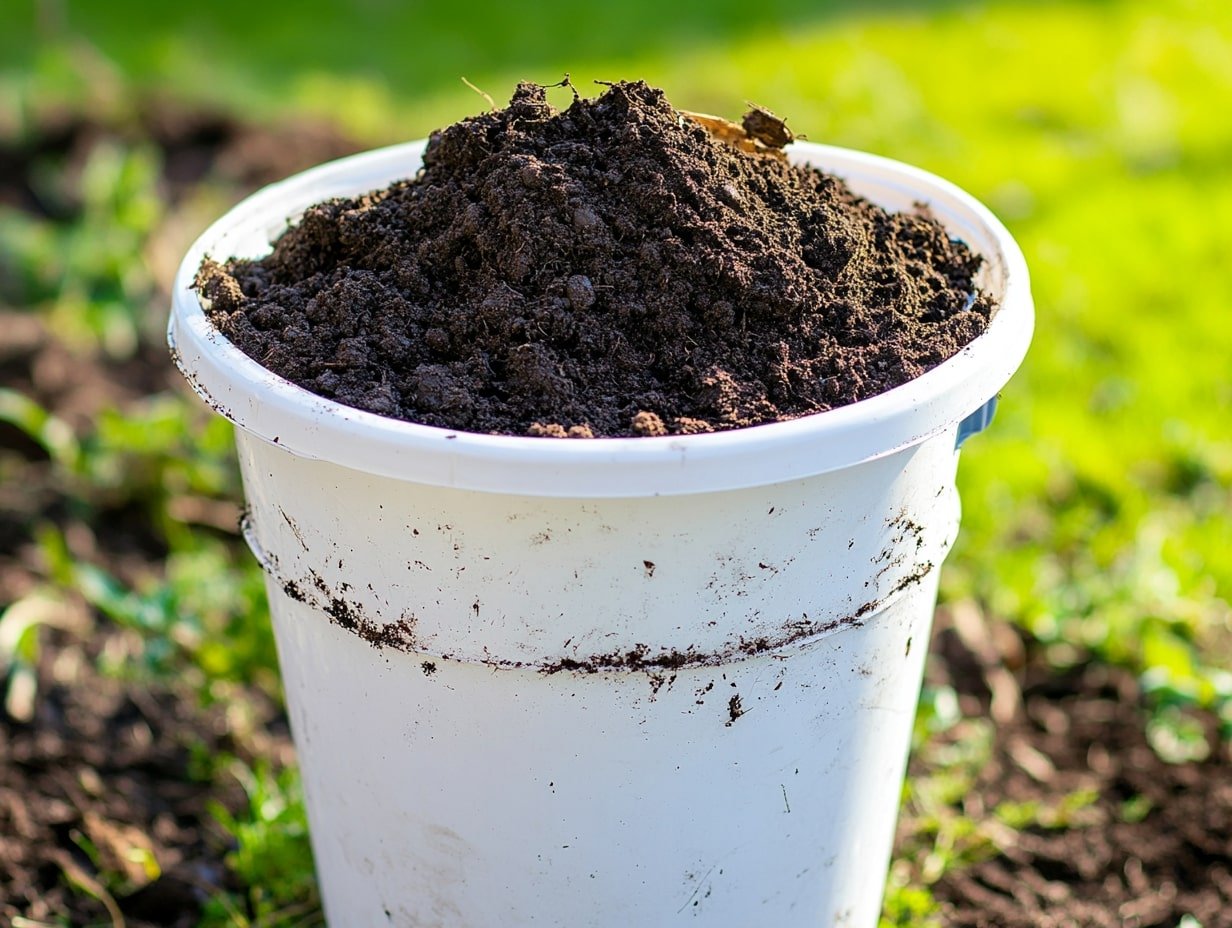
- Go for Lightweight Mixes: Choose a potting mix designed for containers garden soil is too dense and can lead to compaction.
- Add Organic Matter: Mix in compost, worm castings, or well-rotted manure to boost nutrients and improve structure.
- Ensure Good Drainage: Blend in perlite or coarse sand to keep the soil light and prevent water from pooling at the roots.
- pH Balance: Most vegetables thrive in a slightly acidic to neutral pH (around 6.0–7.0) test and amend accordingly.
- Pro Tip: Refresh or replace the soil each season to prevent disease buildup and nutrient depletion.
4. Position for Optimal Sunlight
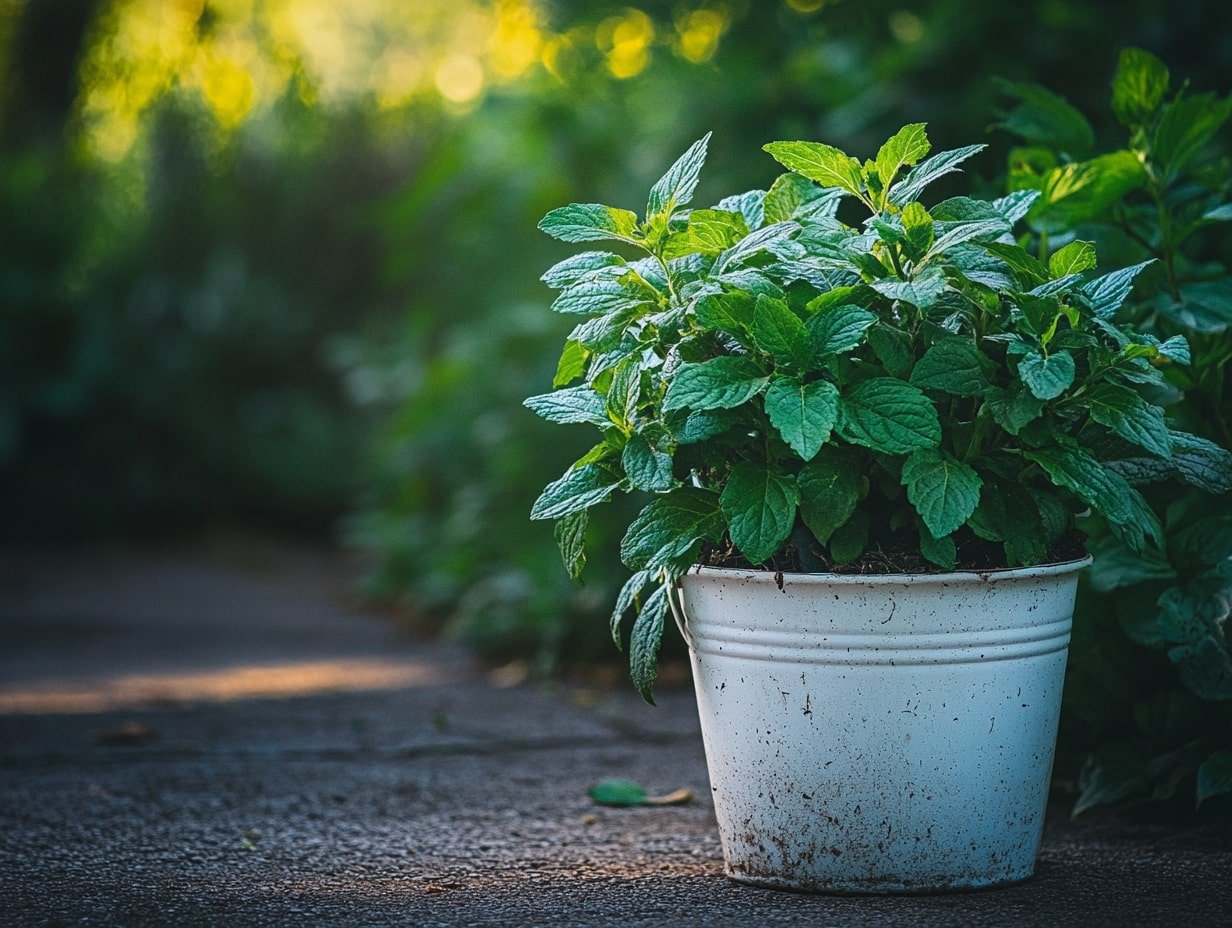
- Follow the Light: Most herbs and vegetables need at least 6–8 hours of direct sunlight daily. Choose a sunny spot for best growth.
- Rotate Regularly: To ensure even exposure, rotate buckets every few days if one side gets more light than the other.
- Shade-Lovers Welcome: Grow leafy greens like spinach or lettuce in partial sun to prevent bolting in hot weather.
- Sun Mapping Helps: Observe your space throughout the day to track how sunlight moves ideal for container placement.
- Pro Tip: Use rolling plant caddies to move buckets around and chase the sun without heavy lifting.
5. Select Plants Wisely
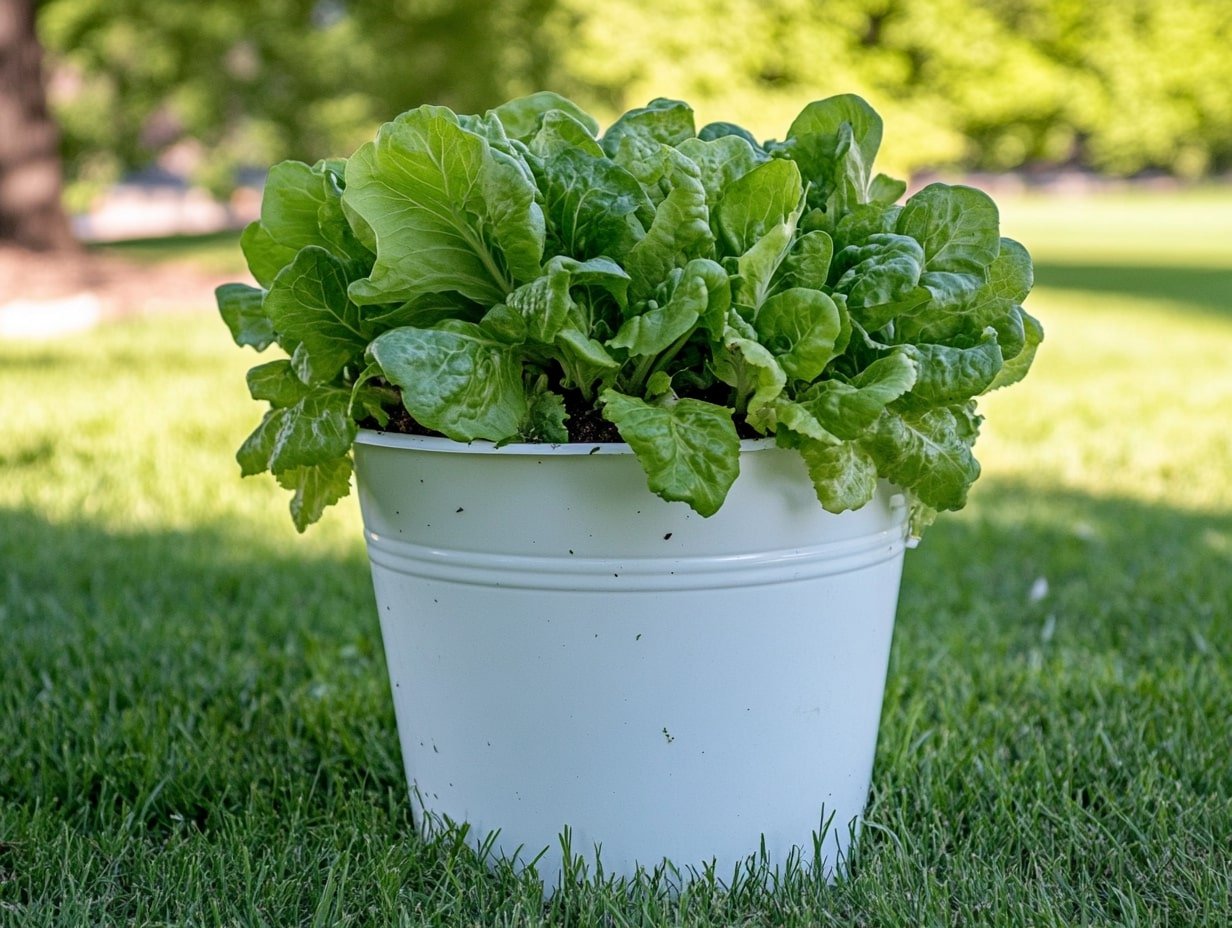
- Grow What Thrives: Choose compact, fast-growing varieties like lettuce, spinach, radishes, and herbs that do well in confined spaces.
- Shallow Roots Work Best: Plants with shallow root systems are ideal for buckets and won’t struggle with space constraints.
- Match to Microclimate: Consider your local weather patterns and available light to guide plant selection for the best yields.
- Mix & Match: Try companion planting like pairing basil with tomatoes to maximize space and benefits.
- Pro Tip: Use plant markers to keep track of varieties, especially when planting multiple buckets with different crops.
6. Monitor Watering Regularly
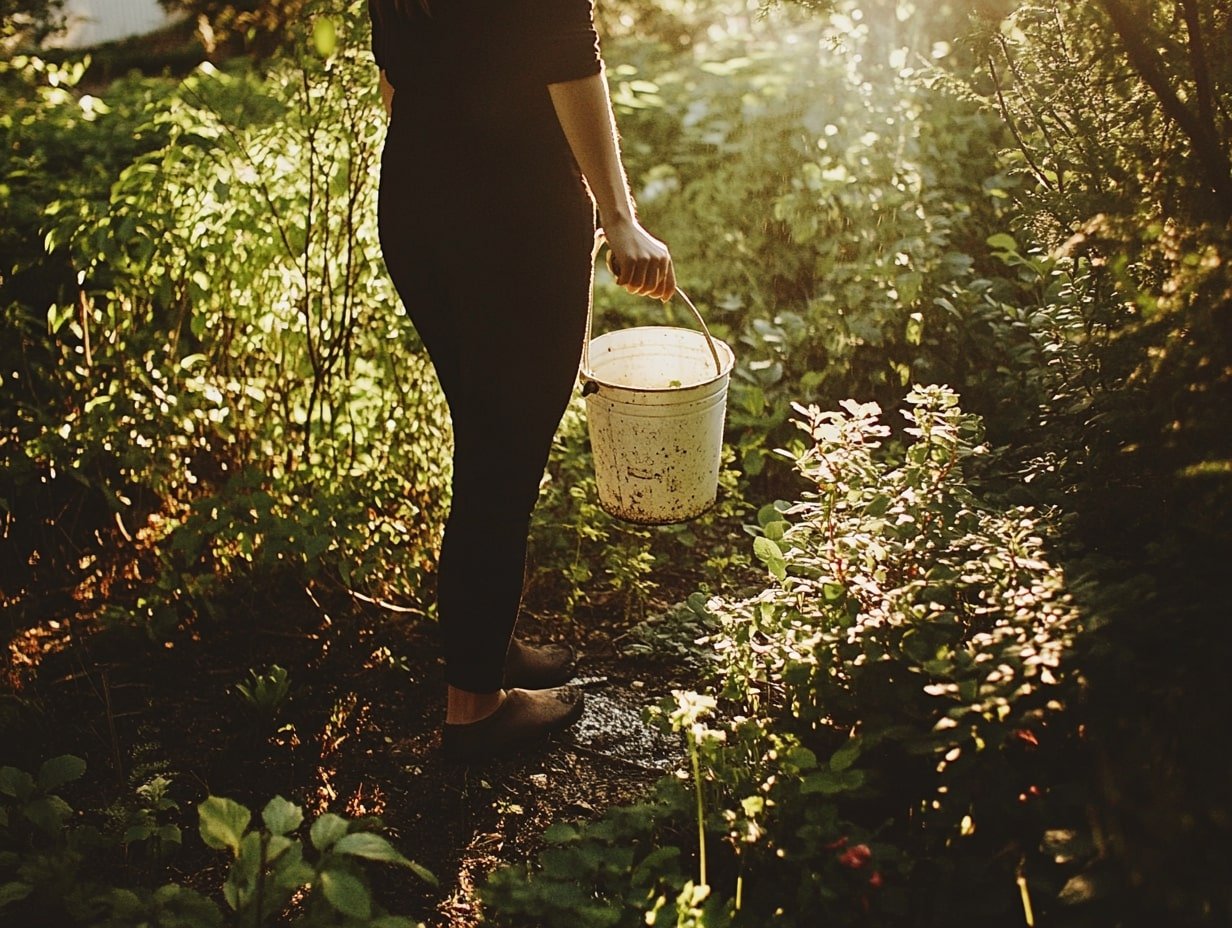
- Check Moisture Daily: Buckets dry out faster than garden beds test soil with your finger to ensure consistent moisture.
- Water Deeply: When you do water, soak the roots thoroughly rather than giving frequent light sprinkles.
- Adjust by Weather: Water more often in hot, dry spells and reduce during rainy or cooler periods.
- Avoid Overwatering: Ensure drainage holes are functioning so roots don’t sit in soggy soil.
- Pro Tip: Use mulch or small pebbles on the surface to retain moisture and reduce evaporation.
7. Protect from Temperature Extremes
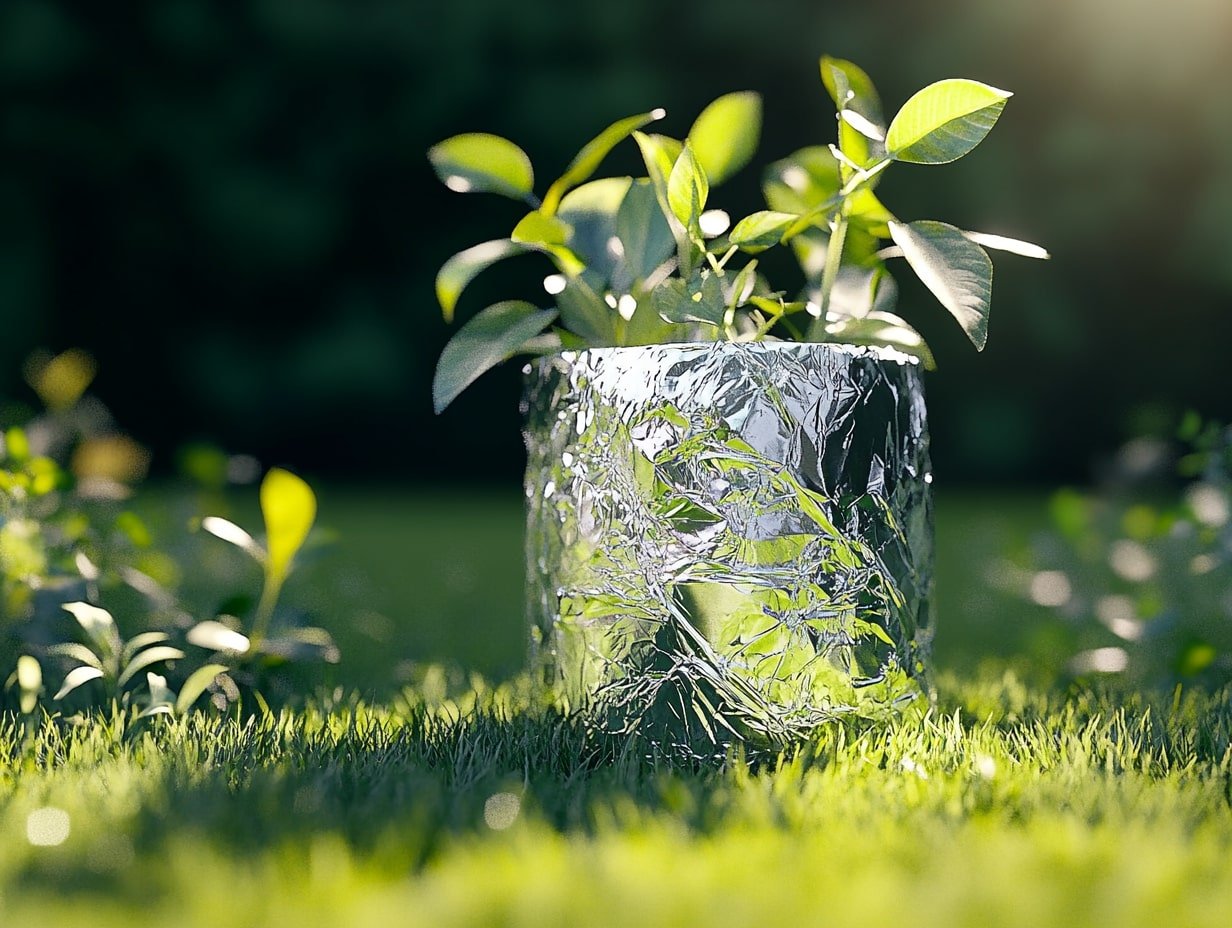
- Insulate Buckets: Wrap buckets with reflective material like aluminum foil to deflect excessive heat and keep roots cool.
- Elevate in Winter: Keep containers off the ground using wooden slats or pot feet to avoid freezing contact.
- Move with the Sun: Take advantage of bucket portability to reposition plants during heatwaves or cold snaps.
- Shade Smartly: Use lightweight cloths or partial coverings in extreme midday sun to prevent wilting.
- Pro Tip: Line the inside of your bucket with bubble wrap before adding soil for added insulation without compromising drainage.
8. Incorporate Vertical Supports

- Trellis Training: Use compact trellises or wall-mounted hooks to support vining crops like grapes, cucumbers, or peas.
- Maximize Small Spaces: Vertical growth keeps plants off the ground, saving space and reducing the risk of rot or pests.
- Sturdy Stakes Matter: Choose rust-resistant metal rods or bamboo poles that won’t buckle under fruit weight.
- Tie Smart: Use soft, flexible ties or cloth strips to gently secure vines without damaging stems.
- Pro Tip: Place the bucket against a wall or fence to anchor the plant and provide natural support for upward growth.
9. Harvest and Prune Regularly
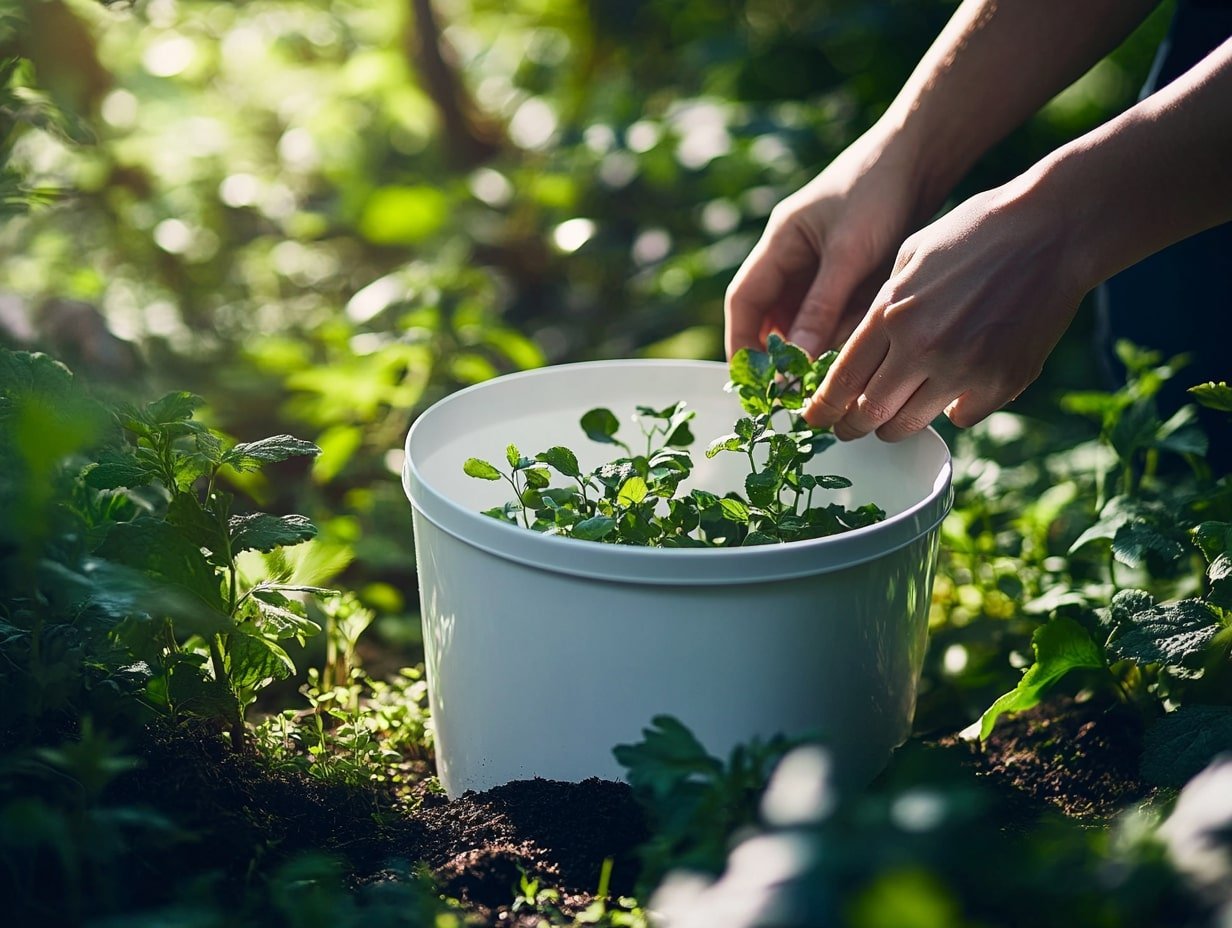
- Encourage New Growth: Frequent harvesting stimulates your plants to produce more leaves, fruits, or herbs.
- Shape with Purpose: Light pruning helps maintain air circulation and prevents overcrowding in compact buckets.
- Avoid Over-Harvesting: Take no more than one-third of the plant at a time to avoid stressing it.
- Tools Matter: Use clean, sharp scissors or pruning shears to prevent bruising and disease spread.
- Pro Tip: Morning is the best time to harvest plants are most hydrated and flavorful before the sun reaches its peak.

